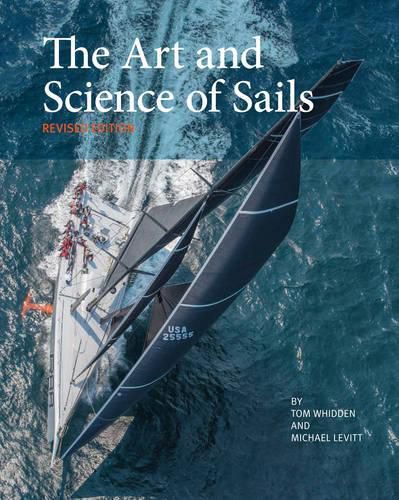Readings Newsletter
Become a Readings Member to make your shopping experience even easier.
Sign in or sign up for free!
You’re not far away from qualifying for FREE standard shipping within Australia
You’ve qualified for FREE standard shipping within Australia
The cart is loading…






This is not your parents’ Art and Science of Sails, written by Tom Whidden and Michael Levitt and published in 1990 by St. Martin’s Press.
Today there are one-piece sails made over a 3D mold in the shape they will assume in the wind. Sail plans have radically evolved to fractional rigs, fat-head mains, and non-overlapping jibs. That is true for racing boats as well as cruising. Thus, ninety percent of the text is new, as are almost all of the more than 100 photographs and technical illustrations.
The authors focus on circulation as they did in the first edition, but now come at it from a different direction. And for the first time anywhere, they attempt to quantify its effects.
Whidden and Levitt utilize explanations like circulation to answer such diverse questions as:
* Why fractional rigs, fat-head mains, and non-overlapping jibs have come to predominate
* Why and how leech twist can be a sail-trimmer’s best friend
* Why a yacht designer positions the mast, keel, and rudder to create some weather helm
* Why the safe-leeward position is advantageous relative to the entire fleet, not just to the boat you tacked beneath and forward of
* Why a mainsail’s efficiency is improved with added upper roach, beyond the value of the extra area
* Why the miracle of upwind sailing is not that there is so much lift but so little drag
* Why, when sailing upwind, the main is always trimmed to a tighter angle than the jib
* What a polar diagram tells us or why tacking downwind is almost always faster than sailing directly to a mark
There is also an in-depth look at the wonders of material utilization-not just materials. Indeed there have been no new fibers accepted into sailmaking for over 20 years. It is how they are used that makes the difference. In the last three chapters, the authors drill down on mainsails, headsails, and downwind asymmetric or symmetric spinnakers. And in this edition for the first time they address downwind aerodynamics. The book celebrates the complexity and beauty of sails and of the whole rarefied sport of sailing.
$9.00 standard shipping within Australia
FREE standard shipping within Australia for orders over $100.00
Express & International shipping calculated at checkout
Stock availability can be subject to change without notice. We recommend calling the shop or contacting our online team to check availability of low stock items. Please see our Shopping Online page for more details.
This is not your parents’ Art and Science of Sails, written by Tom Whidden and Michael Levitt and published in 1990 by St. Martin’s Press.
Today there are one-piece sails made over a 3D mold in the shape they will assume in the wind. Sail plans have radically evolved to fractional rigs, fat-head mains, and non-overlapping jibs. That is true for racing boats as well as cruising. Thus, ninety percent of the text is new, as are almost all of the more than 100 photographs and technical illustrations.
The authors focus on circulation as they did in the first edition, but now come at it from a different direction. And for the first time anywhere, they attempt to quantify its effects.
Whidden and Levitt utilize explanations like circulation to answer such diverse questions as:
* Why fractional rigs, fat-head mains, and non-overlapping jibs have come to predominate
* Why and how leech twist can be a sail-trimmer’s best friend
* Why a yacht designer positions the mast, keel, and rudder to create some weather helm
* Why the safe-leeward position is advantageous relative to the entire fleet, not just to the boat you tacked beneath and forward of
* Why a mainsail’s efficiency is improved with added upper roach, beyond the value of the extra area
* Why the miracle of upwind sailing is not that there is so much lift but so little drag
* Why, when sailing upwind, the main is always trimmed to a tighter angle than the jib
* What a polar diagram tells us or why tacking downwind is almost always faster than sailing directly to a mark
There is also an in-depth look at the wonders of material utilization-not just materials. Indeed there have been no new fibers accepted into sailmaking for over 20 years. It is how they are used that makes the difference. In the last three chapters, the authors drill down on mainsails, headsails, and downwind asymmetric or symmetric spinnakers. And in this edition for the first time they address downwind aerodynamics. The book celebrates the complexity and beauty of sails and of the whole rarefied sport of sailing.